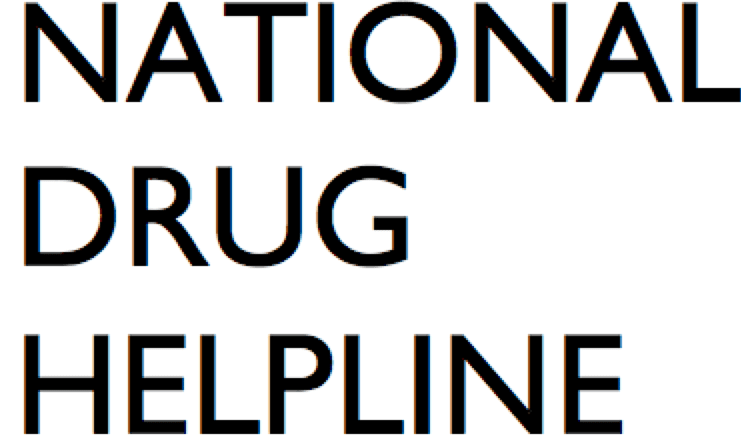People use ecstasy to experience intense elation, energy, wakefulness, sexual arousal, and postponement of sleepiness and fatigue. However, in addition to these desired effects, the drug can have serious adverse effects, which can sometimes prove fatal. Long-term or more regular use heightens the risk of these adverse effects. Some of the harmful effects of ecstasy include: [1]
Psychological Effects
- Inability to think clearly
- Impaired judgment
- Anxiety and depression
- Paranoia
- Hallucinations
- Agitation
- Bizarre or reckless behavior
- Panic attacks
- Delirium
- Psychosis
- Mood swings, including irritability
- Fatigue and trouble focusing
Physical Symptoms
- Trouble sleeping
- Increase in body temperature
- Muscle tension and cramping
- Involuntary clenching of teeth
- Tremors
- Blurred vision
- Dry mouth
- Headache
- Nausea
- Rapid eye movements
- Restless leg movements
- Sweating
- Chills
People with heart disease or circulation problems are at a particularly high risk of health complications from ecstasy because it can increase blood pressure, heart rate, and workload on the heart.
It is worth noting that people who abuse MDMA can experience hyperthermia (very high body temperature) and dehydration, leading to kidney and heart failure. The risk is especially high when the drug is used in a hot place with exertion, such as dancing for hours at a crowded party.
Deaths
Each year there are around 50 deaths involving ecstasy/MDMA. This drug is rarely the only drug found in the deceased person’s system. The cause of death is almost always either hyperthermia (elevated body temperature) or hyponatremia (low sodium levels). The latter can be caused by drinking too much water. [2]
Long-Term MDMA/Ecstasy Use
Long-term MDMA use can result in chronic psychological adverse effects like irritability, aggression, and impulsiveness as well as physical health problems including sleep problems, anxiety, depression, memory problems, decreased appetite, and decreased interest in sex.
MDMA promotes unnatural feelings of emotional closeness to people who are essentially strangers. When this drug is used, especially in combination with the erectile dysfunction drug Viagra (sildenafil), it can lead to unsafe sexual encounters. This puts ecstasy users at risk of contracting HIV/AIDS, hepatitis, and other sexually transmitted infections.
Occasionally, a condition called serotonin syndrome can occur, which can prove fatal. This happens when there is too much serotonin (a natural brain chemical) in the body. MDMA exerts its effects by flooding the brain with large amounts of serotonin. In the days following ecstasy use, 4 out of 5 users report rebound lethargy and depression, during what is commonly called the “crash”. This is due to a depletion (falling levels) of serotonin in the brain. Some ecstasy users escalate the dose to avoid these effects, putting their health and even their lives at risk.
Repeated doses of ecstasy are neurotoxic and can cause permanent damage to the brain. Regular ecstasy users may experience problems with learning and memory, difficulty with higher cognition, changes in sleep and appetite, and loss of interest in sex. The destruction of brain cells can be permanent and may last well after heavy recreational use of ecstasy has stopped. [3]

Is MDMA Addictive?
There are varying theories about the addictive potential of MDMA (ecstasy). Experiments in animals indicate that subjects will self-administer the drug. This is an important indicator in the laboratory of a drug’s potential for abuse. Additionally, it is worth noting that MDMA targets the same brain chemicals as other drugs that are deemed highly addictive. Nonetheless, ecstasy is widely considered less addictive than some other Schedule I drugs such as cocaine and heroin.
Studies show that the continued use of ecstasy, despite physical and psychological problems, occurs in more than 85% of users. [4]
Other studies have shown that more than 40% of ecstasy users meet the criteria for dependence, and more than 30% meet the criteria for abuse. [5]
Ecstasy is also considered addictive because nearly 70% of users experience unpleasant withdrawal symptoms when they stop using the drug after regular use. Withdrawal symptoms typically start about 12 hours after the last dose and are intense for the first few days. Some common ecstasy withdrawal symptoms include:
- Fatigue
- Depression
- Appetite loss
- Problems with concentrating
On the other hand, research has also shown that many ecstasy users do not report high levels of craving for the drug. [6] This may partly be explained by the fact that ecstasy is often contaminated by other substances. As a result, ecstasy users may not experience intense cravings when the drug they use contains additives. Unfortunately, users do not always know precisely what “ecstasy” contains when they take it. Therefore, any craving they experience could be the result of mixed drugs. In other words, some additives like amphetamines are more addictive than ecstasy, and cravings for the adulterant may be stronger than cravings for MDMA.
Last updated: March 14, 2024
Hailey Shafir, M.Ed., LCMHCS, LCAS, CCS
Hailey Shafir is a licensed addiction specialist and mental health counselor. She graduated from North Carolina State University with a master of education in clinical mental health counseling in 2012, and has developed deep expertise in the areas of mental health, behavioral addictions and substance abuse. She is passionate about using this knowledge to raise awareness, provide clear and accurate information, and to improve the quality of treatment for these disorders.
Hailey is an LCMHCS (license number: S9539) under the North Carolina Board of Mental Health Counselors, and an LCAS (ID: LCAS-21333) and CSS (ID: CCS-20721) under the North Carolina Addictions Specialist Professional Practice Board.
References
| ↑1 | CMAJ. 2001;165(7):917-928. Kalant H. The pharmacology and toxicology of “ecstasy” (MDMA) and related drugs. Available online. Accessed on March 14, 2024. |
|---|---|
| ↑2 | Health Technol Assess. 2009;13(6):iii-315. doi:10.3310/hta13050 Rogers G, Elston J, Garside R, et al. The harmful health effects of recreational ecstasy: a systematic review of observational evidence. Available online. Accessed on March 14, 2024. |
| ↑3 | Hum Psychopharmacol. 2001;16(8):557-577. doi:10.1002/hup.351. Parrott AC. Human psychopharmacology of Ecstasy (MDMA): a review of 15 years of empirical research. Available online. Accessed on March 14, 2024. |
| ↑4 | Addiction. 2009;104(10):1679-1690. doi:10.1111/j.1360-0443.2009.02649.x Cottler LB, Leung KS, Abdallah AB. Test-re-test reliability of DSM-IV adopted criteria for 3,4-methylenedioxymethamphetamine (MDMA) abuse and dependence: a cross-national study. Available online. Accessed on March 14, 2024. |
| ↑5 | Hum Psychopharmacol. 2001;16(8):599-606. doi:10.1002/hup.343 Cottler LB, Womack SB, Compton WM, Ben-Abdallah A. Ecstasy abuse and dependence among adolescents and young adults: applicability and reliability of DSM-IV criteria. Available online. Accessed on March 14, 2024. |
| ↑6 | J Psychoactive Drugs. 2014;46(2):154-161. doi:10.1080/02791072.2014.901586. Davis AK, Rosenberg H. The prevalence, intensity, and assessment of craving for MDMA/ecstasy in recreational users. Available online. Accessed on March 14, 2024. |

